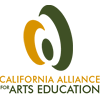Presenting the Plan for School Board Adoption
The purpose of making a presentation to the school board is three-fold:
- A well-organized formal presentation gives weight and substance to the content of the proposed plan; it demonstrates creative thinking and articulates a clear rationale for every recommendation.
- It is a chance to highlight the unified voice of diverse stakeholders that have come together in the development of a thoughtful, viable plan.
- A public presentation provides a useful summary of what is usually a very complex series of planning steps, giving listeners the opportunity to get the “big picture” thinking in a clear, concise manner.
The specific presentation format will of course be dictated in part by the culture and protocols of each particular school board. Several approaches that have been successful include PowerPoint presentations highlighting key aspects and priorities of the plan, student demonstrations of arts learning or arts performances (videotaped or live), and brief oral reports accompanied by a well-organized written report.
In all cases, the plan should be placed in a context that highlights what currently exists in the school district and what the Community Arts Team recommends as a plan of action.
Tips for a Successful School Board Presentation
Know your school board’s protocol for adopting policies and plans.
It is highly unlikely that a school board will adopt a plan based on a quick presentation, so they will need to be briefed through a study session before the meeting, or a two-part presentation (i.e., introduce the plan at one meeting, adopt it at a subsequent meeting). In either case, provide copies of the full arts education plan to the superintendent and board members well in advance of the meeting (1-2 weeks, including at least one weekend so they actually have time to read it carefully).
Represent the school community.
You went to great lengths to ensure that your planning team represents a broad range of stakeholders, so make sure that your presentation does, as well. Choose effective, personable speakers who represent the voice of parents, teachers, administrators, community arts partners, and students. If you have a school board member on the planning team, it can be highly effective for that individual to direct closing remarks to peers on the board about the success of the planning process and its implications for student learning.
Rehearse, rehearse, rehearse.
In most school districts, the arts are in a vulnerable position, so it is all the more critical that the presentation be highly effective. To ensure that everyone is clear on the talking points and flow, hold a timed “dress rehearsal” in advance including all audiovisual media. If possible, convene your rehearsal in the board meeting space itself. The rehearsal serves as an important reality check on how much content you can fit into the time allotted, and increases the confidence of the presenters.
Anticipate questions.
Share your plan with critical friends outside the planning team, and invite them to your dress rehearsal. Ask them to help you anticipate questions that might be raised by school board members, administrators, teachers, parents, or community members.
Bring a cheering section.
School board members and administrators get a read on what is important by the number of people who turn out for an issue at a school board meeting. Work to ensure that your entire planning team is present, and urge them to invite additional advocates and stakeholders representing the school community and program partners. The critical mass will send a message to the board that the arts are valued.
Demonstrate the value of the arts.
There is nothing like a student performance to demonstrate the value of quality arts learning. This can be accomplished through an exhibit of student work, a live performance, or a videotaped performance of a program in the district that exemplifies the quality put forth in the plan. If a live performance is not possible, create a brief video (e.g., iMovie) that captures both the learning process and the finished product in a particular program. Remember to include quotes from students about their own development in the process (cognitive, emotional, social, physical). Also, note that most school boards require that all audiovisuals be submitted in advance.
Ensure that the plan gets the time and attention it deserves.
The arts can be sidelined at board meetings in favor of issues that are considered more urgent or important. Keep in contact with the meeting administrator about the agenda; you may want to reschedule your presentation if it will be overshadowed or squeezed out by another high profile agenda item (school closures, budget cuts, etc.).







